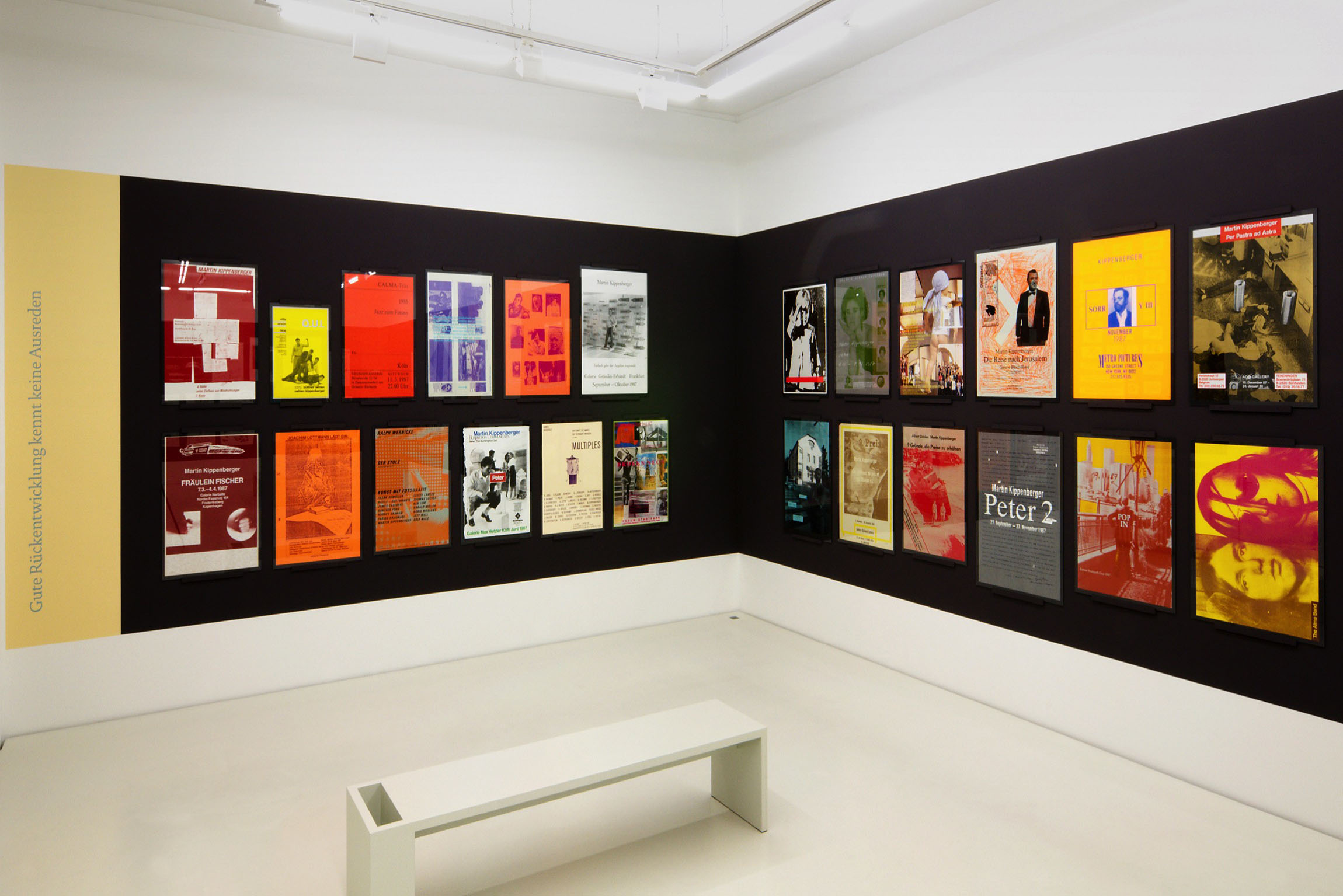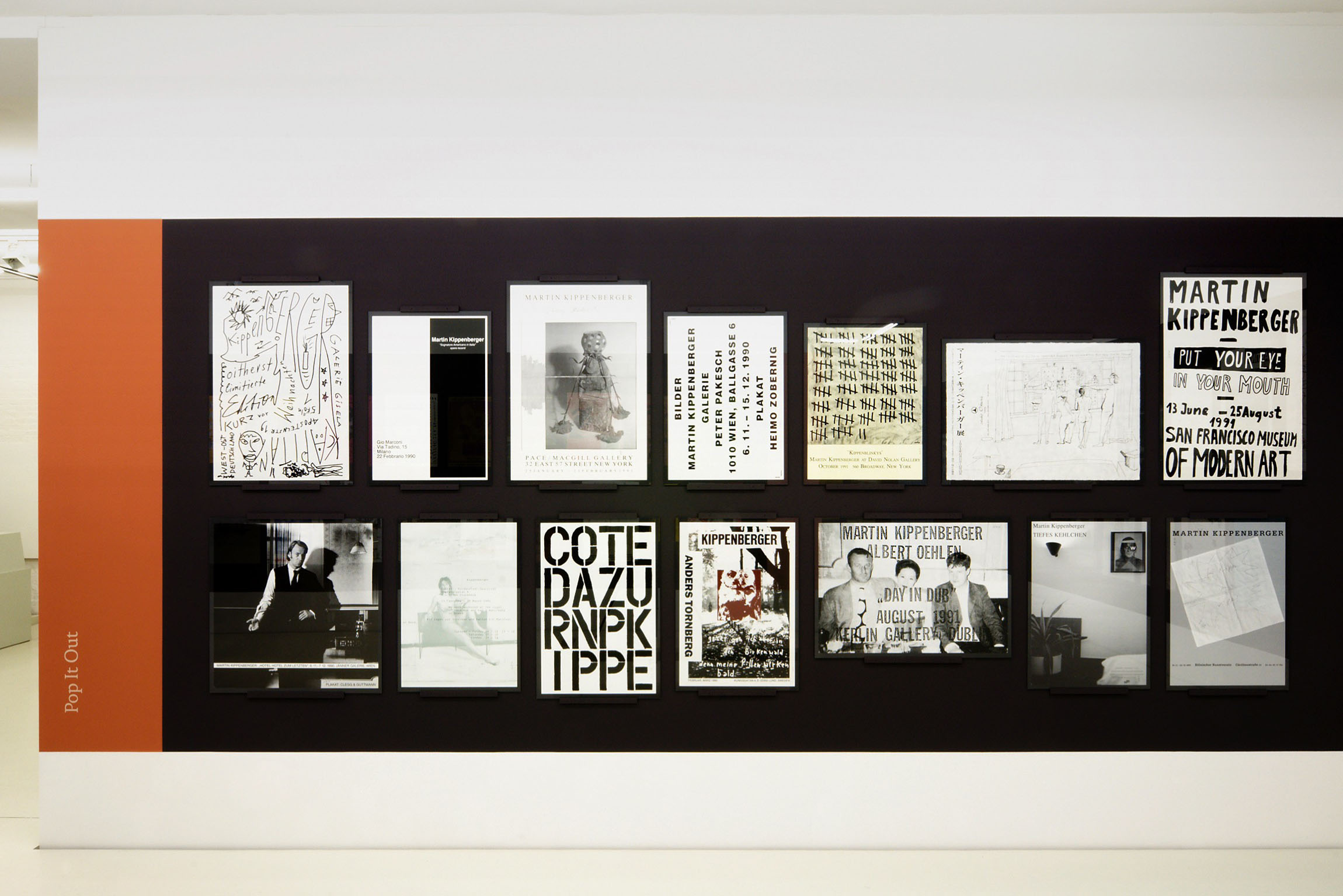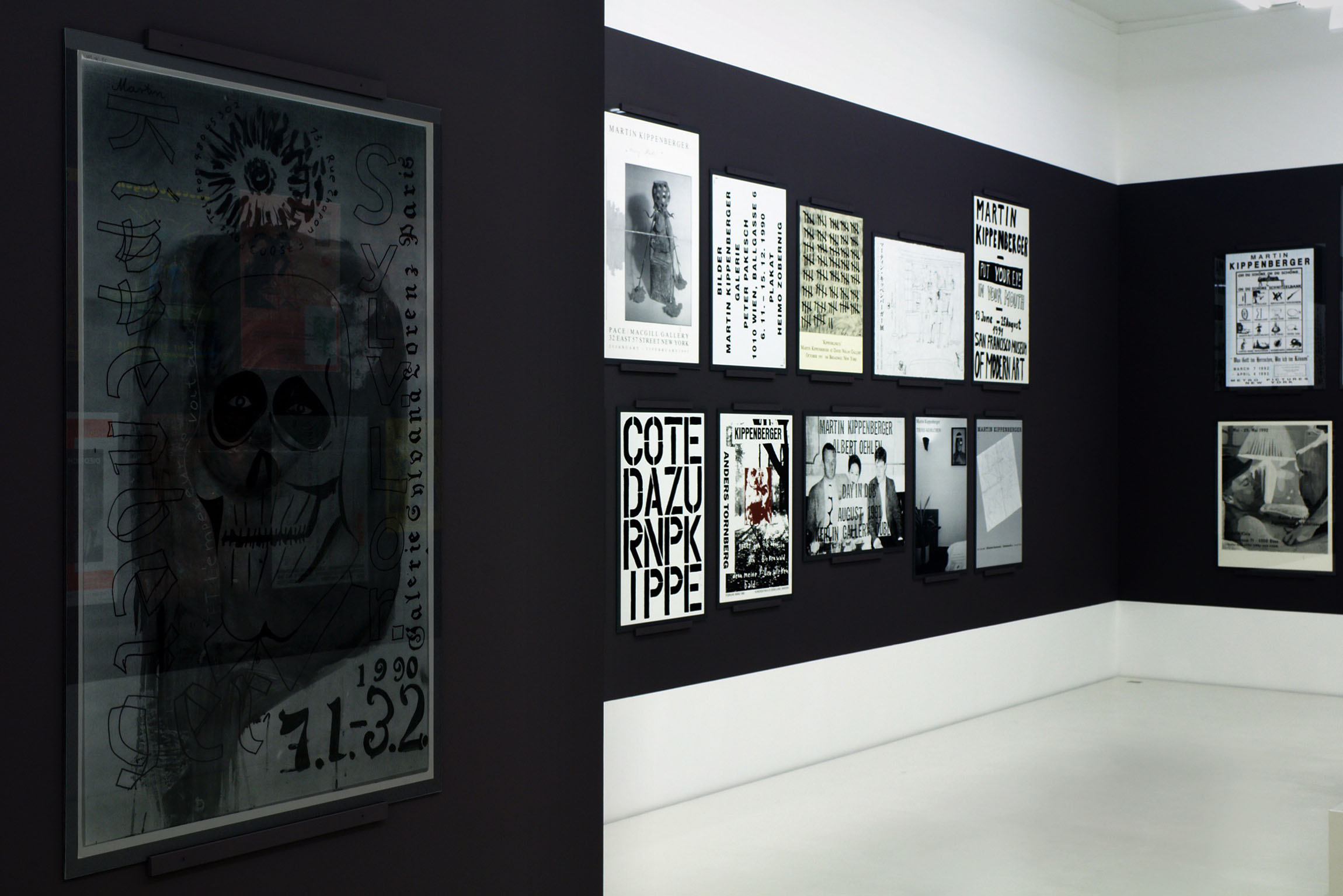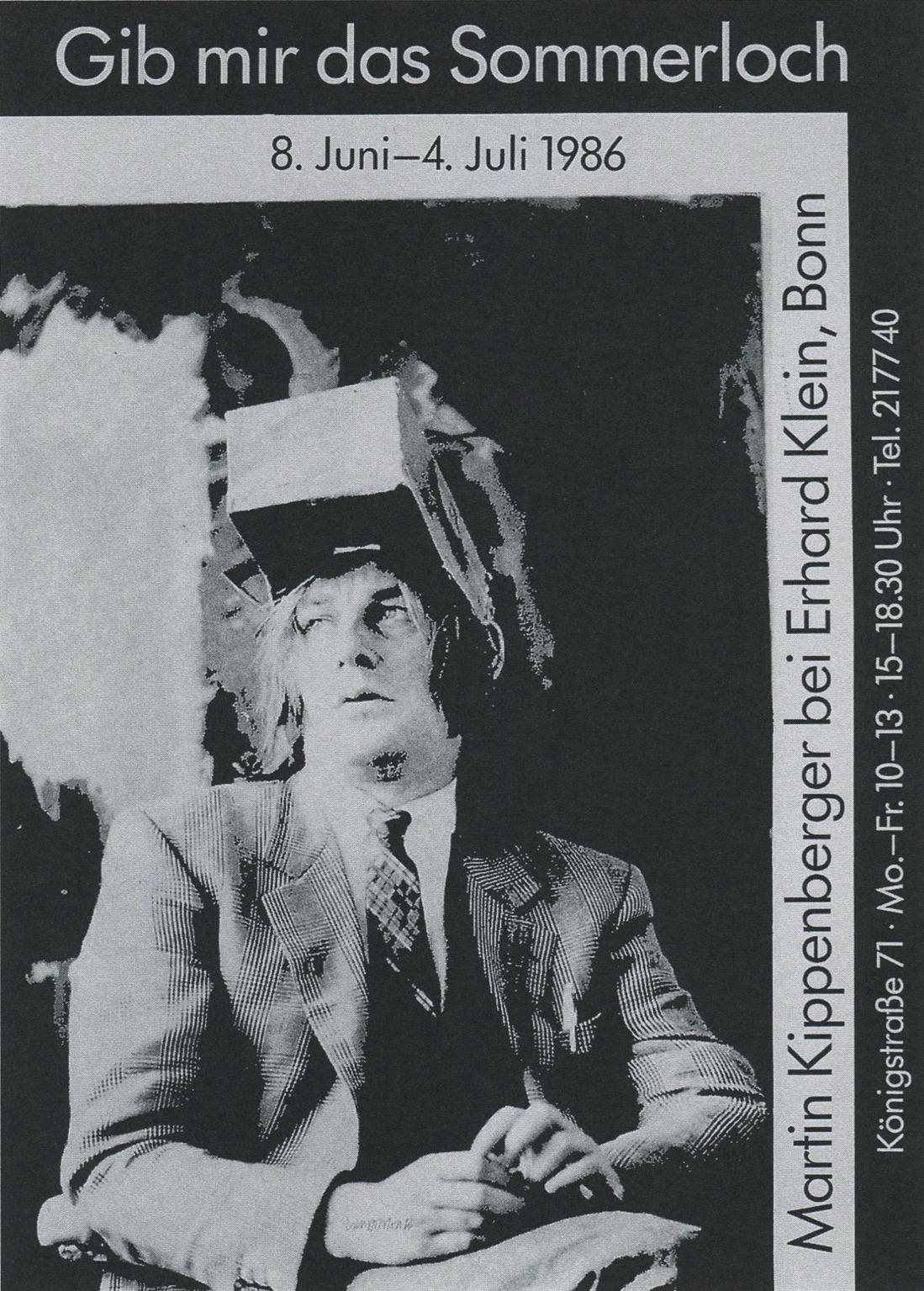Martin Kippenberger
Mut zum Druck
Works

Gib mir das Sommerloch
1986
Silkscreen (from an edition of 25)
Galerie Klein, Bonn
from the O.T. Maniac portfolio
© Estate Martin Kippenberger, Galerie Gisela Capitain, Cologne

Miete Strom Gas
1986
Silkscreen (from an edition of 25)
Hessisches Landesmuseum, Darmstadt
from the O.T. Maniac portfolio
© Estate Martin Kippenberger, Galerie Gisela Capitain, Cologne

Helmut Newton für Arme
1985
Silkscreen (from an edition of 16)
CCD Galerie, Düsseldorf
from the T.Ü. (Title Unnecessary) portfolio
© Estate Martin Kippenberger, Galerie Gisela Capitain, Cologne
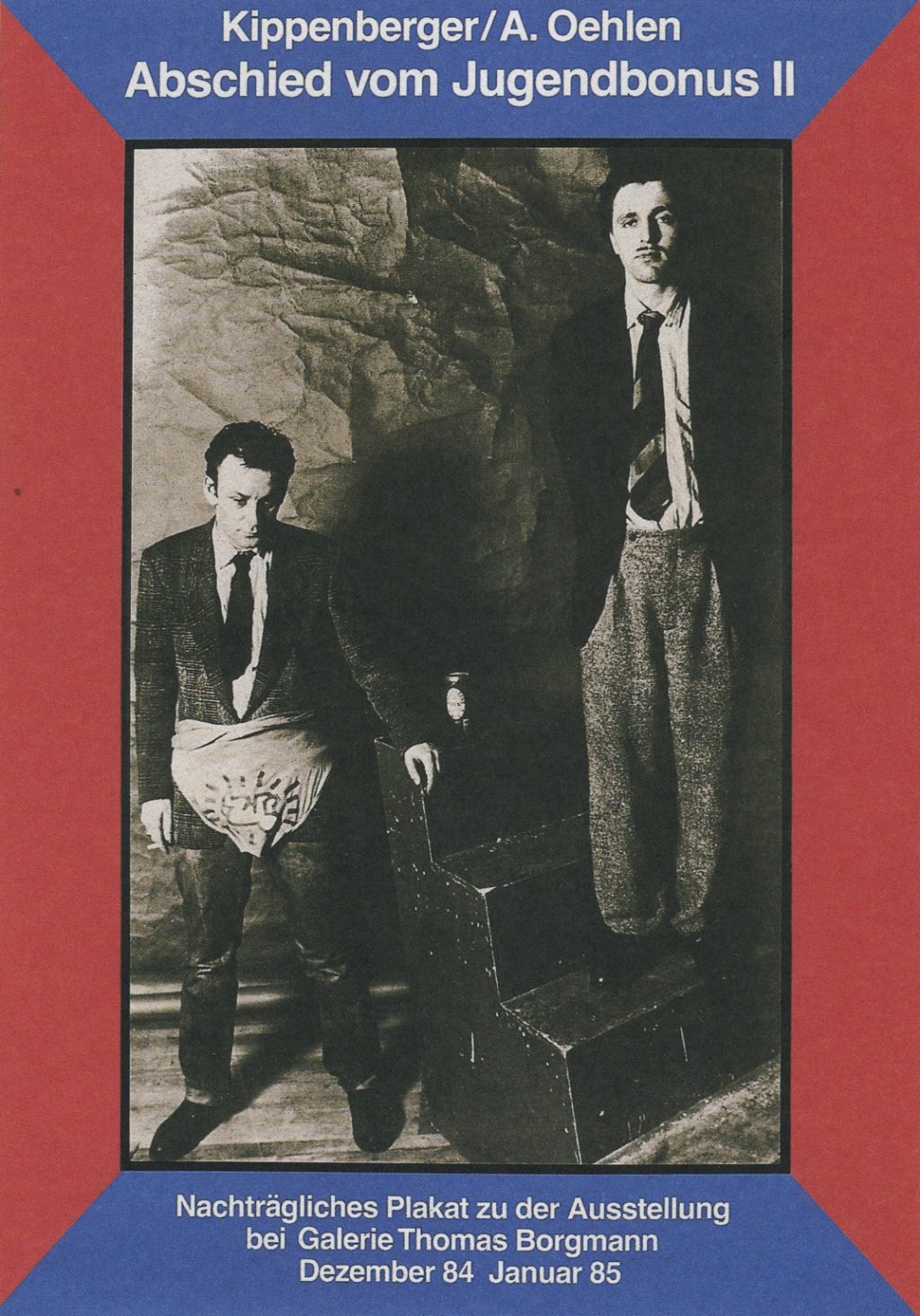
Abschied vom Jugendbonus II
1984/85
Silkscreen (from an edition of 16)
Galerie Thomas Borgmann, Köln
from the T.Ü. (Title Unnecessary) portfolio
© Estate Martin Kippenberger, Galerie Gisela Capitain, Cologne

Kampf dem Dekubitus
1986
Silkscreen (from an edition of 25)
CCD Galerie, Düsseldorf
from the O.T. Maniac portfolio
© Estate Martin Kippenberger, Galerie Gisela Capitain, Cologne
Text
Between 1977 and 1997 Martin Kippenberger created 178 posters, for reasons going well beyond advertising his own exhibitions. Indeed, he seems to rarely have passed up an opportunity to visit his favourite printing studio with yet another spontaneous idea: concerts, parties, readings or simply a birthday were reason enough for the artist, known for his gregarious sociability, to use this particular medium. In order to achieve the self-set goal of “beating Picasso” (who created over 400 posters) he also drew on the help of his artist friends — from Albert Oehlen to Jeff Koons — to come up with designs. In this exhibition, Nolan Judin Berlin is pleased to present all 121 posters that form the five legendary portfolios published in small editions between 1986 and 1994.
In the extensive and highly diverse oeuvre created by Martin Kippenberger before his untimely death in 1997, the posters play a role that is significant beyond mere numbers. This notorious enfant terrible saw in them the opportunity to reach out with his exuberant ideas, provocations, irreverences and declarations of love far beyond the elitist world of museums and galleries. He once remarked that “museums are old-fashioned blather”, and together with his books, his lectures, as well as his actions in front of (more or less) large crowds, these posters enabled him to address his audience without being mediated by institutions. The poster, the self-advertising medium par excellence, represented the brilliant fusion of “Kippenberger the self-promoter” with “Kippenberger the bogey of the middle classes”: the spectator is spared no absurdity, no embarrassment, no taboo remains unbroken. Just like in his paintings and sculptures, he consciously and indulgently violates each and every rule, insulting his audience with his banality and coarseness – only to, in the next moment, regain its affection by way of his brilliant wit.
Continue reading
His legendary limericks (“Ich geh‘ jetzt in den Birkenwald, denn meine Pillen wirken bald” — which translates loosely as: “I think I’ll soon head for the hills, I feel the kick from all those pills”), as well as titles of his exhibitions (“Give me the silly season”) and works (“For the Life of Me I Can’t See the Swastika in This”) speak of a carefree sense of humour, but at the same time of a kind of scrutiny that is serious and mocking at the same time. Kippenberger — ingenious, self-taught and eccentric — saw art as an egalitarian undertaking, a perspective that also rendered it political and hence serious. On second inspection, we also find this seriousness in his handling of the poster as medium. He knows the rules of the genre and employs them professionally. At the same time he cleverly plays with and subverts the expectations that a viewer might have of this medium. Sometimes he uses a rather direct means of communication, achieving an immediate impact by way of attractive visual motives and classic fonts. At other times the layout is fragmented, reminiscent rather of an advertisement one needs to step closer to in order to decipher. On nearly every poster, clever slogans and cheeky innuendoes invite us to read and look more closely. The great recurring motive in Kippenberger’s posters is the artist himself. From snapshots to carefully staged portraits, the images sometimes show him as a daring streaker, sometimes as a pot-bellied package-tourist. Self-deprecating and ceaselessly poking fun at bourgeois ideas of dignity and self-respect, Kippenberger manages, in spite of all the blustering embarrassments, to use his conspicuous self-consciousness and great sensitivity to win over his audience.


